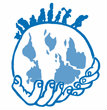Countries have failed to reach a landmark agreement on tackling plastic pollution after more than two years of negotiations.
More than 200 nations met in South Korea for what was meant to be a final round of talks.
But deep divisions remained between a group of nearly 100 "high ambition" countries calling for plastic to be phased out and oil-producing nations who warned this would affect the world's development.
"The objective of this treaty is to end plastic pollution not plastic itself, plastic has brought immense benefit to societies worldwide," said the Kuwait negotiators in the final hours.
Now read more here
